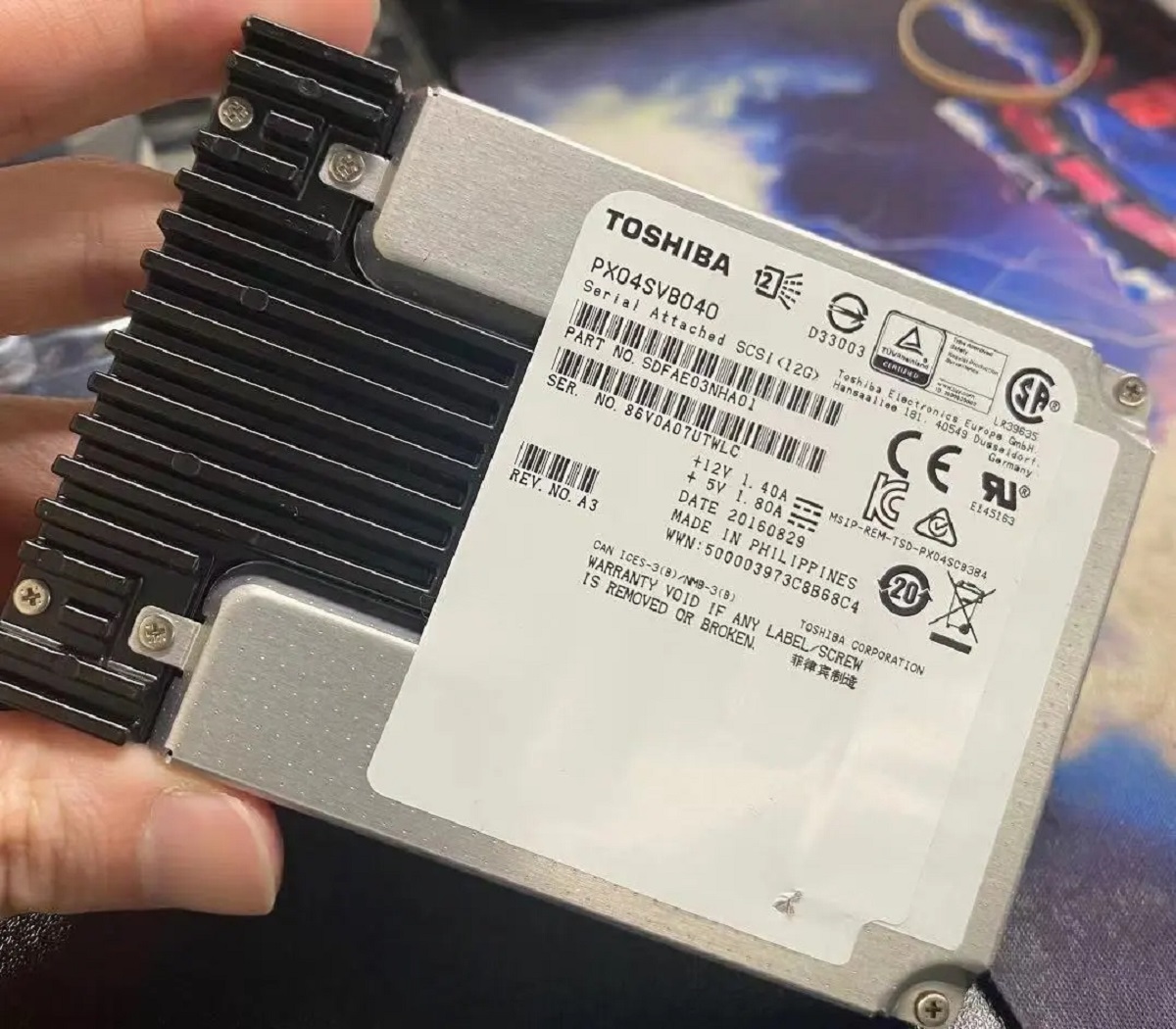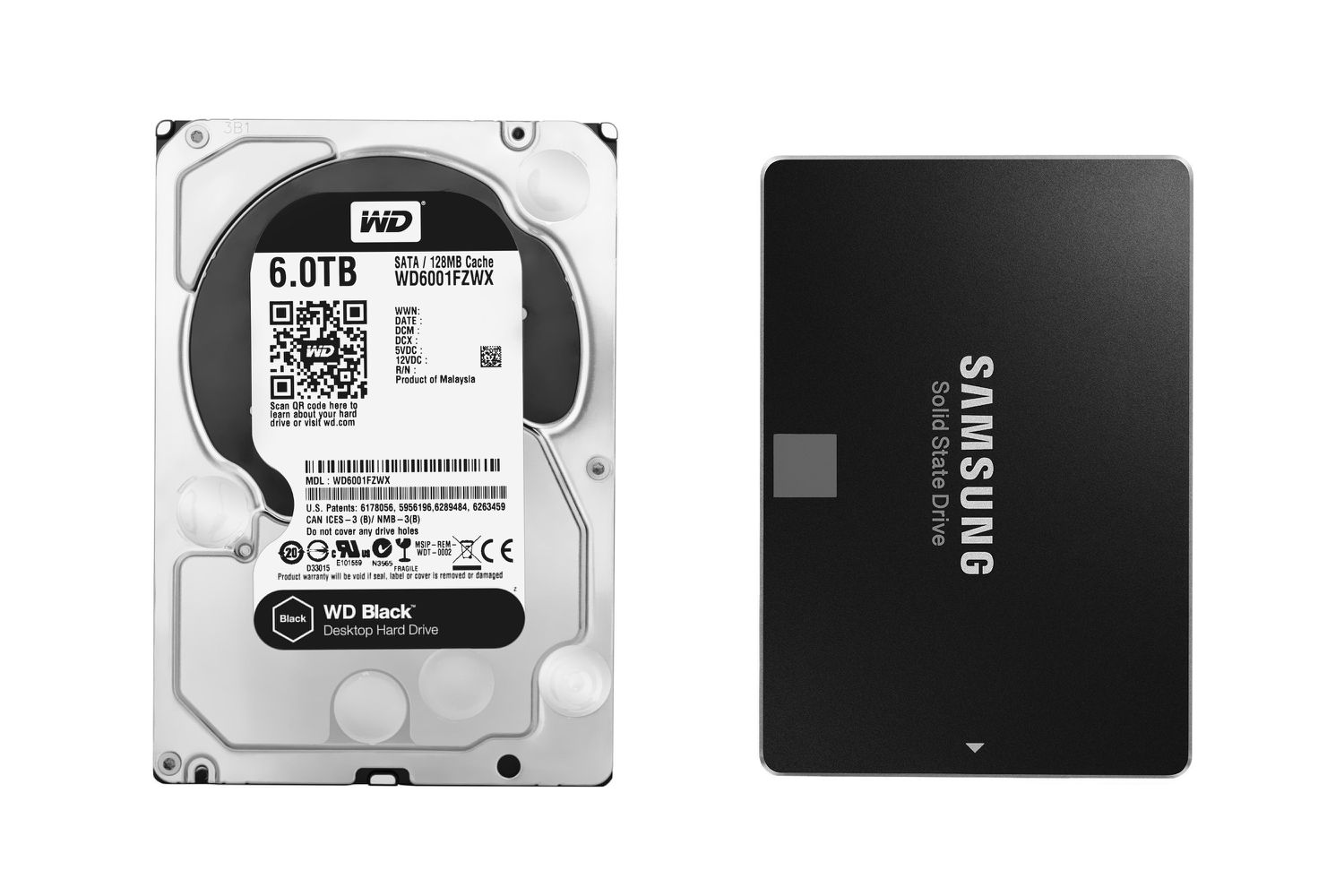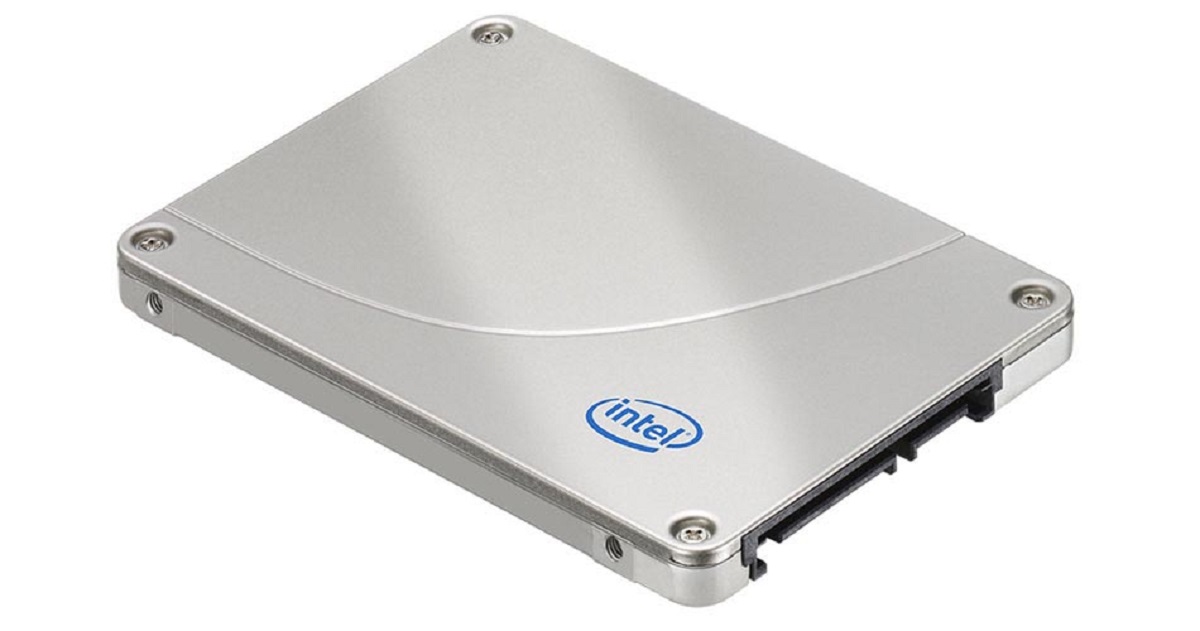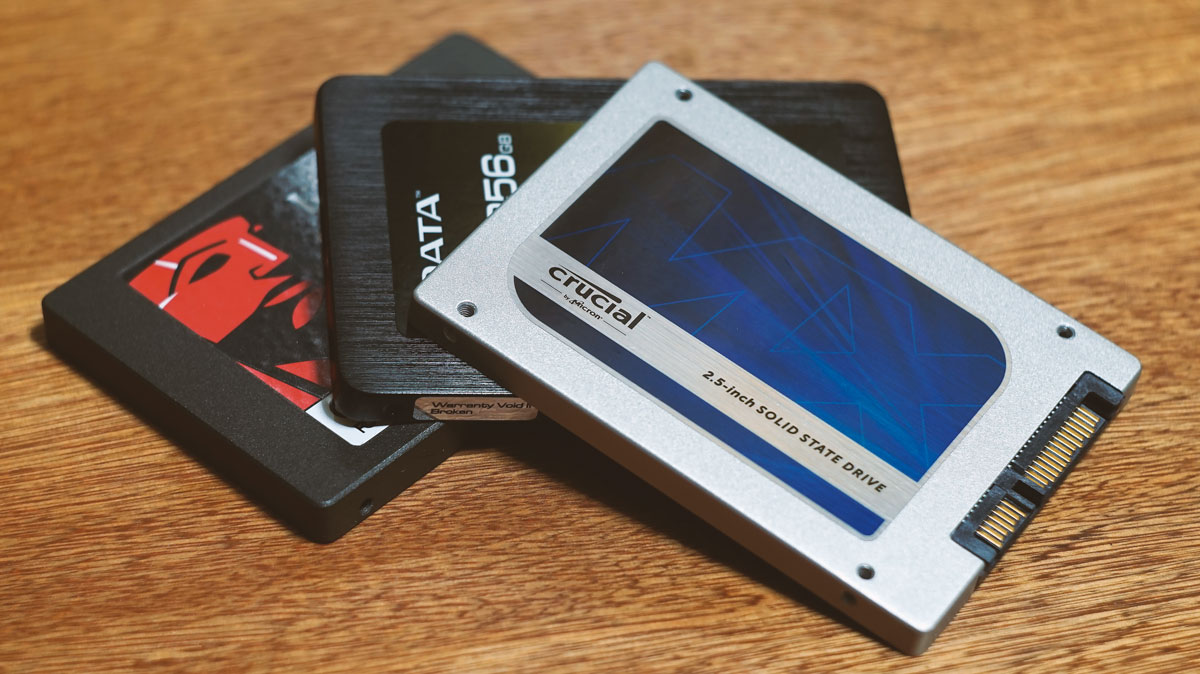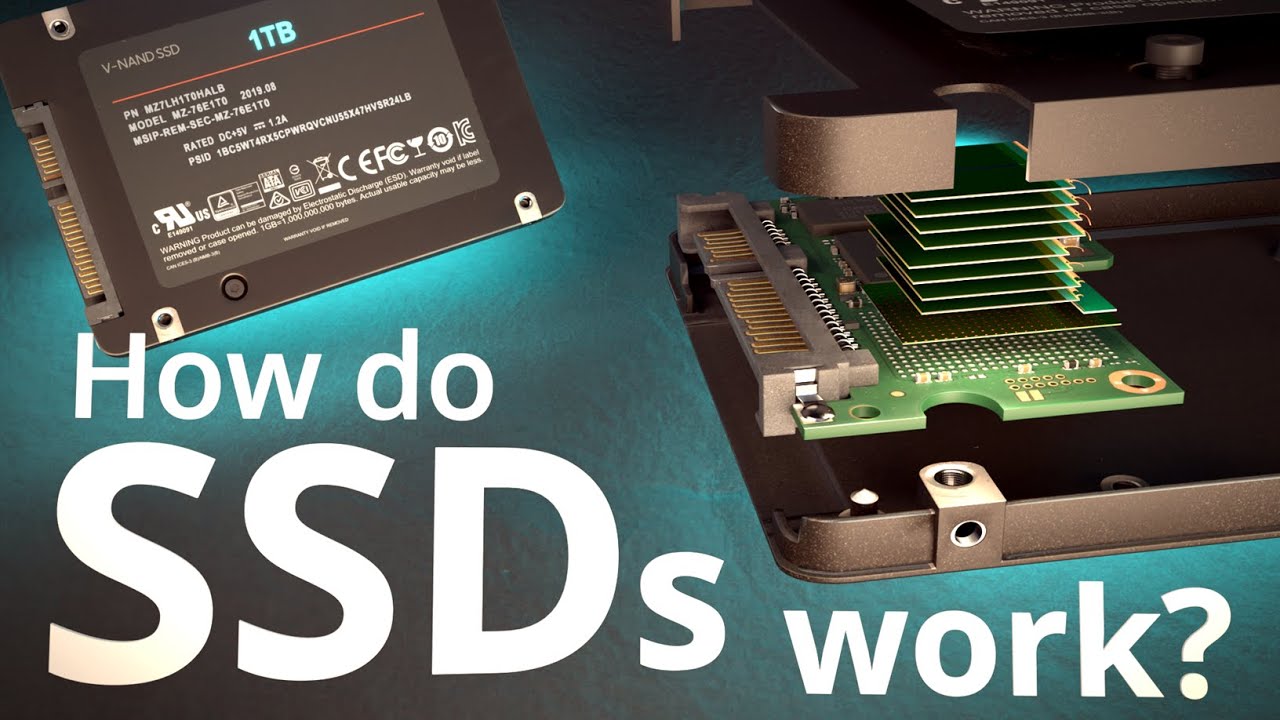Introduction
Solid State Drives (SSDs) have revolutionized the way we store and access data on our devices. With their faster read and write speeds and enhanced reliability compared to traditional hard drives, SSDs have become the preferred choice for many computer users. Whether you use an SSD in your laptop, desktop, or even in enterprise-level storage systems, it’s important to understand how they work and how their lifespan is affected by the number of writes they can handle.
In this article, we will explore the concept of write endurance in SSDs and answer the common question: How many times can you write to a Solid State Drive?
SSDs have become increasingly popular due to their ability to access data quickly, resulting in faster boot times and lower latency. Unlike traditional hard drives with spinning platters and mechanical components, SSDs use non-volatile flash memory to store data. This flash memory is made up of NAND cells that can retain information even when there is no power supplied to the drive. The absence of moving parts in SSDs makes them more durable and less prone to mechanical failures.
Traditional hard drives have a limited lifespan due to their mechanical nature. Over time, the moving parts wear out, leading to reduced performance and eventually drive failure. In contrast, SSDs do not have the same mechanical limitations, but they are still subject to wear and tear, albeit in a different way.
The lifespan of an SSD is determined by various factors, including the number of write operations it can endure. Write endurance refers to the total amount of data that can be written to the drive before it starts to experience degradation in performance or reliability. This factor is crucial for individuals and businesses that perform extensive read and write operations on their devices.
Understanding the concept of write endurance is essential when considering the longevity of your SSD and making informed decisions about its usage. In the following sections, we will delve deeper into write endurance ratings, factors that affect SSD lifespan, and ways to extend the lifespan of your Solid State Drive.
What is a Solid State Drive (SSD)?
A Solid State Drive (SSD) is a type of storage device that uses flash memory to store and retrieve data. Unlike traditional hard drives which rely on spinning disks and mechanical components, SSDs use NAND-based flash memory chips to store information. This makes them faster, more durable, and less prone to mechanical failures compared to traditional hard drives.
SSDs have become increasingly popular in various electronic devices, including laptops, desktops, and servers, due to their many advantages over traditional hard drives. One of the main advantages of SSDs is their speed. Since the data is accessed electronically rather than mechanically, SSDs can read and write data significantly faster than traditional hard drives. This results in faster boot times, quicker application launches, and improved overall system performance.
Another major advantage of SSDs is their durability. With no moving parts, there is a reduced risk of mechanical failure, making SSDs more resistant to shocks, drops, and vibrations. This makes them ideal for use in portable devices, where durability is essential. Furthermore, because SSDs do not rely on moving parts, they generate less heat and consume less power, leading to improved energy efficiency and longer battery life in laptops and other portable devices.
SSDs come in various form factors, including the widely used 2.5-inch size for laptops and desktops, as well as smaller M.2 and PCIe NVMe formats for ultra-thin laptops and high-performance desktops. They also come in different capacities, ranging from a few gigabytes to multiple terabytes, allowing users to choose the size that suits their needs.
In terms of data storage, SSDs use NAND flash memory, which can be classified into two main types: Single-Level Cell (SLC) and Multi-Level Cell (MLC). SLC flash stores one bit of data per memory cell, offering superior reliability and endurance. MLC flash, on the other hand, stores multiple bits of data per cell, providing higher storage capacity but with slightly reduced endurance.
Overall, Solid State Drives provide a reliable and efficient solution for data storage, offering fast performance, durability, and energy efficiency. As their prices continue to drop and capacities increase, SSDs are becoming the go-to choice for users seeking improved system responsiveness and reliability.
How does a Solid State Drive work?
To understand how a Solid State Drive (SSD) works, we need to examine the technology behind it. SSDs use a combination of electronic components and flash memory to store and retrieve data. Let’s take a closer look at the key components and the process involved.
At the heart of an SSD is the controller, which acts as the brain of the drive. The controller manages the flow of data, performs error correction, and handles other essential functions. It acts as an interface between the computer system and the NAND flash memory chips.
The NAND flash memory is where the data is stored in an SSD. NAND is a type of non-volatile memory that retains information even without power. The memory cells in NAND flash can be in one of two states: charged or uncharged. These states represent the binary values of 0 and 1, which are used to store data.
Each memory cell in NAND flash can store multiple bits of data, usually either 1 or 2 bits per cell. The number of bits stored per cell affects the cost, performance, and endurance of the SSD. Single-Level Cell (SLC) NAND stores one bit per cell, providing higher reliability and endurance, while Multi-Level Cell (MLC) NAND stores multiple bits per cell, providing higher capacity but with slightly reduced endurance.
When data needs to be written to an SSD, the controller sends the data to the appropriate NAND flash memory cells. To write data, the controller applies an electrical charge to the cells, changing their state from uncharged to charged. This process is known as programming. To read data, the controller measures the electrical charge of the cells, determining their charged or uncharged state and retrieving the stored data.
To ensure the integrity and longevity of the SSD, wear leveling algorithms are employed. These algorithms distribute writes evenly across all the memory cells, preventing certain cells from being subjected to excessive writing, which can result in decreased performance and lifespan. By spreading out the write operations, wear leveling helps to maximize the overall endurance of the SSD.
In addition to wear leveling, SSDs also utilize error correction mechanisms, such as Error Correcting Code (ECC), to detect and correct any data errors that may occur during the read and write processes. This helps to maintain data integrity and prevent data loss.
Overall, the combination of the controller, NAND flash memory, wear leveling algorithms, and error correction mechanisms allows SSDs to provide fast and reliable data storage and retrieval. With no moving parts, SSDs offer improved durability and faster access times compared to traditional hard drives, making them a popular choice for users seeking enhanced performance and reliability in their computing systems.
Lifespan of a Solid State Drive
The lifespan of a Solid State Drive (SSD) refers to how long the drive is expected to function optimally before it starts experiencing performance degradation or failure. Unlike traditional hard drives that have a limited lifespan due to mechanical wear and tear, SSDs have a longer potential lifespan due to their lack of moving parts.
SSDs are constructed using NAND flash memory, which is a type of non-volatile memory that retains data even when the power is turned off. While SSDs are generally more durable than traditional hard drives, they are not completely immune to wear and tear. Over time, the NAND flash memory cells in an SSD can degrade, leading to a decrease in performance or even the failure of the drive.
The lifespan of an SSD is influenced by multiple factors. One of the most significant factors is the number of write operations, or write endurance, that the SSD can handle. Each time data is written to the NAND flash memory cells, there is a slight degradation of the cells. Eventually, as the number of write operations increases, the cells can wear out and become unable to reliably store data.
Apart from write endurance, other factors can impact the lifespan of an SSD. These include operating temperature, voltage fluctuations, power cycling, and even the workload or usage pattern. High temperatures, for example, can accelerate the aging process of the NAND flash memory cells, while sudden power outages or voltage fluctuations can cause data corruption or damage the SSD.
It’s important to note that SSD lifespan is typically measured in terms of the total amount of data that can be written to the drive, known as the Total Bytes Written (TBW), rather than a specific timeframe. The TBW rating is provided by the manufacturer and serves as an indicator of the expected lifespan under normal operating conditions.
Modern SSDs usually come with high TBW ratings, ranging from tens of terabytes to hundreds of terabytes, ensuring that they can handle extensive write operations for years. However, it’s crucial to consider your specific usage scenarios and select an SSD with an appropriate TBW rating that aligns with your needs.
While SSD lifespan is a valid concern, technological advancements have significantly improved the durability of SSDs over the years. Moreover, most users are unlikely to reach the maximum TBW rating in typical day-to-day use. However, if you are engaging in heavy write-intensive tasks or running servers with constant write operations, it’s advisable to monitor the SSD’s health and consider replacements if it approaches its TBW limit.
By understanding the factors that affect SSD lifespan and practicing good maintenance habits, such as keeping the drive cool, providing stable power, and managing write loads efficiently, you can maximize the lifespan of your SSD and ensure reliable performance over an extended period.
Factors that affect the lifespan of a Solid State Drive
The lifespan of a Solid State Drive (SSD) can be influenced by several factors. While SSDs are generally more durable than traditional hard drives, understanding these factors can help you maximize the lifespan of your SSD and ensure optimal performance over time. Let’s explore some of the key factors that can impact the longevity of an SSD.
1. Write Endurance: The number of write operations, or write endurance, is a crucial factor in determining the lifespan of an SSD. Each time data is written to the NAND flash memory cells, there is a slight degradation of the cells. Over time, as more write operations occur, the cells can wear out and become less reliable. However, modern SSDs are designed to handle extensive write operations, and the manufacturer provides a Total Bytes Written (TBW) rating as an indicator of the expected lifespan.
2. Operating Temperature: High operating temperatures can accelerate the aging process of the NAND flash memory cells in an SSD. It is important to keep the SSD within the recommended temperature range to ensure optimal performance and longevity. Excessive heat can cause the cells to degrade faster, leading to reduced lifespan and potential data loss.
3. Power Cycling: Frequent power cycling, or switching the SSD between power on and power off states, can impact its lifespan. Sudden power outages or voltage fluctuations can potentially cause data corruption or damage the SSD. It is advisable to provide stable power and avoid unnecessary power cycles to minimize the risk of premature failure.
4. Workload or Usage Pattern: The workload or usage pattern of an SSD can affect its lifespan. Heavy write-intensive tasks, such as video editing or database operations, can put more stress on the NAND flash memory cells and result in faster wear. Conversely, read-intensive workloads typically have less impact on the lifespan of an SSD.
5. Firmware and Controller Technology: The firmware and controller technology of an SSD play a crucial role in its performance and lifespan. Advanced firmware and controller technologies can optimize write amplification, wear leveling, and error correction, resulting in improved lifespan and reliability.
6. Data Capacity and Overprovisioning: Overprovisioning refers to reserving a certain amount of the SSD’s capacity for internal use, such as wear leveling and garbage collection. Properly configured overprovisioning can prolong the lifespan of an SSD by reducing the stress on the NAND flash memory cells and maintaining performance consistency.
It is worth noting that while these factors can influence SSD lifespan, modern SSDs are designed to be highly durable and capable of handling extensive write operations. Most users are unlikely to reach the maximum TBW rating in typical usage scenarios. However, it is important to consider these factors, especially if you engage in heavy write-intensive tasks or run servers with constant write operations. Monitoring the health of your SSD and practicing good maintenance habits, such as keeping the drive cool and providing stable power, can help maximize its lifespan and ensure reliable performance over time.
Write Endurance: How many times can you write to a Solid State Drive?
One of the key considerations when using a Solid State Drive (SSD) is its write endurance, which refers to the number of write operations the drive can handle before performance degradation or failure occurs. This measure is important for individuals and businesses that engage in extensive write operations or have high-demand computing tasks. Understanding the write endurance of an SSD can help you make informed decisions about its usage and potential lifespan.
The write endurance of an SSD is typically specified by the manufacturer and expressed as the Total Bytes Written (TBW) rating. This rating indicates the total amount of data that can be written to the drive over its lifespan. For example, if an SSD has a TBW rating of 500 terabytes (TB), it means you can write a cumulative total of 500 TB of data to the drive before it is expected to start experiencing performance degradation.
It’s important to note that the TBW rating is an approximation and can vary depending on the specific SSD model. Additionally, the rating does not indicate a fixed time period but rather the total amount of data that can be written to the drive. The lifespan of an SSD can differ significantly depending on the workload and usage patterns.
Modern SSDs have higher write endurance compared to older models, thanks to advancements in NAND flash memory technology and wear-leveling algorithms. In recent years, consumer-grade SSDs have been designed to handle hundreds of terabytes of writes, providing ample durability for average consumer usage.
For typical users, it is unlikely to exhaust the write endurance of an SSD within the lifespan of the drive. For instance, if you write 50 GB of data to the SSD daily, an SSD with a 500 TBW rating could theoretically last for more than 27 years. Bear in mind that this calculation is a rough estimate and does not consider other factors that may contribute to wear, such as high operating temperatures or intense workloads.
It’s important to consider your specific usage scenario when evaluating the write endurance of an SSD. If you engage in write-intensive tasks, such as video editing or data analysis, or operate servers with constant write operations, you may want to opt for an SSD with a higher TBW rating or choose a drive designed for enterprise or professional use.
In summary, the write endurance of an SSD is an important factor to consider when selecting and using the drive. While modern SSDs have improved durability with high TBW ratings, it is crucial to align the SSD’s endurance with your specific usage demands. Monitoring the SSD’s health and implementing good maintenance practices, such as managing write loads efficiently and keeping the drive cool, can help maximize its lifespan and ensure optimal performance over time.
Understanding Write Endurance Ratings
When evaluating the lifespan and durability of a Solid State Drive (SSD), it is essential to understand the write endurance ratings provided by the manufacturer. Write endurance ratings indicate the amount of data that can be written to the SSD before it starts to experience performance degradation or failure. Let’s delve deeper into understanding write endurance ratings and their significance.
Write endurance ratings are typically expressed in terms of Total Bytes Written (TBW). This measurement represents the cumulative total of data that can be written to the SSD over its lifespan. For example, if an SSD has a TBW rating of 500 terabytes (TB), it means you can write 500 TB of data to the drive before it may exhibit reduced performance or reliability.
It’s important to note that write endurance ratings can vary between different SSD models and manufacturers, so it’s crucial to compare specifications when selecting an SSD for your specific needs. High-performance SSDs, such as those designed for enterprise or professional use, often have higher TBW ratings compared to consumer-grade SSDs.
Write endurance ratings are influenced by several factors, including NAND flash memory technology, controller design, and firmware optimizations. Advanced SSDs utilize features like wear leveling, garbage collection, and error correction algorithms to distribute write operations evenly across the drive and prolong its lifespan. These technologies minimize the wear on specific NAND flash memory cells, maximizing the overall endurance of the drive.
In addition to write endurance, it’s essential to consider other factors that can impact the longevity of an SSD. Operating temperature, power cycling, workload, and usage patterns can all play a role in the wear and tear experienced by the NAND flash memory cells. Proper care and maintenance of the SSD, such as maintaining stable power supply, managing workloads efficiently, and keeping the drive cool, can further prolong its lifespan.
While write endurance ratings provide a valuable guideline for SSD lifespan, it’s important to note that most average users are unlikely to reach the maximum TBW rating during the expected life of the drive. The TBW rating is designed to provide a conservative estimate and account for intensive workloads and extended usage scenarios.
When selecting an SSD, it is crucial to consider your specific usage patterns and requirements. If you engage in intensive write operations or run high-demand applications, it may be wise to opt for an SSD with a higher TBW rating or choose a drive designed for professional or enterprise use. However, for typical consumer or general-purpose usage, most modern SSDs with reasonable TBW ratings should provide ample durability for everyday tasks.
Understanding write endurance ratings empowers you to make informed decisions when it comes to selecting an SSD that meets your performance and longevity needs. By considering the write endurance rating alongside other factors that impact SSD lifespan, you can ensure optimal performance and reliability from your SSD for years to come.
Is Write Endurance a cause for concern?
Write endurance is an important consideration when it comes to Solid State Drives (SSDs), as it determines the total amount of data that can be written to the drive before performance degradation or failure may occur. However, for most average users, write endurance should not be a major cause for concern. Let’s explore why.
Modern SSDs are designed to provide a high level of durability, and their write endurance ratings have significantly improved over the years. Most consumer-grade SSDs offer TBW (Total Bytes Written) ratings that far exceed the average user’s typical write demands, ensuring that they can handle regular usage for many years.
In typical consumer usage scenarios, it is unlikely for an SSD to reach its maximum TBW rating within the expected lifespan of the drive. For instance, if you write 50 GB of data to the SSD daily, an SSD with a TBW rating of 500 terabytes could theoretically last for more than 27 years. This estimation does not consider other factors that may contribute to wear, but it provides a rough idea of the longevity of SSDs under normal conditions.
It’s important to note that SSDs usually have plenty of spare NAND flash memory cells to compensate for wear. This overprovisioning, combined with advanced wear-leveling algorithms, helps distribute write operations across the drive, preventing specific cells from degrading faster than others. These technologies aim to maximize the overall endurance of the SSD.
Moreover, SSDs have built-in error correction mechanisms that can detect and correct any errors that may occur during the read or write processes. These error correction algorithms contribute to the reliability and data integrity of the SSD.
While write endurance is less of a concern for the average user, there are specific use cases, such as heavy write-intensive tasks or constant write operations on servers, that may require SSDs with higher write endurance ratings. These tasks can exert more stress on the NAND flash memory cells, potentially shortening the expected lifespan of the drive.
To mitigate concerns about write endurance, it is advisable to monitor the SSD’s health, as many modern SSDs come with monitoring tools to track their usage and health status. By keeping an eye on the SSD’s condition and managing write loads efficiently, it is possible to extend the lifespan of the drive and optimize its performance.
In summary, for most users, write endurance should not be a significant cause for concern. Modern SSDs offer ample write endurance ratings that exceed typical consumer usage scenarios. However, it is always advisable to consider your specific needs and workload demands. By selecting a well-suited SSD and practicing good maintenance habits, you can ensure reliable performance and longevity from your SSD for years to come.
Ways to extend the lifespan of a Solid State Drive
Solid State Drives (SSDs) are known for their durability and reliability. However, taking proper care of your SSD can further extend its lifespan and ensure optimal performance over time. Here are some effective ways to maximize the longevity of your Solid State Drive:
1. Manage Write Loads: Minimize unnecessary write operations to the SSD by considering storage optimization techniques. This includes moving temporary files, such as internet caches and browser history, to a different drive or regularly clearing them. Utilizing cloud storage or an external hard drive for storing large files can also lessen the strain on the SSD.
2. Enable Trim Support: Trim is an essential feature that helps maintain SSD performance over time. Trim allows the operating system to inform the SSD which unused blocks of data can be cleared, improving overall efficiency. Ensure that your operating system has Trim support enabled for your SSD.
3. Ensure Adequate Cooling: Excessive heat can potentially reduce the lifespan of an SSD. Maintain proper airflow around the SSD, especially in high-performance machines or large storage configurations. Consider utilizing thermal pads or heatsinks to dissipate heat effectively.
4. Use Stable Power Supply: Sudden power outages or voltage fluctuations can damage data stored on the SSD. To minimize the risk, use a reliable and stable power supply unit. Consider using a battery backup or uninterrupted power supply (UPS) to safeguard against unexpected power interruptions.
5. Keep the Drive Firmware Up to Date: Regularly check for firmware updates provided by the SSD manufacturer. Firmware updates often include performance optimizations, bug fixes, and compatibility improvements that can enhance the overall lifespan and performance of your SSD.
6. Implement Regular Backups: While data loss on SSDs is relatively rare, implementing regular backups is still crucial. This protects your data in case of unforeseen events, such as hardware failure or accidental file deletion. Create backups on a separate storage device with ample capacity, ensuring that your important data is safe.
7. Monitor SSD Health: Many SSDs provide monitoring tools or software that allow you to monitor the health and performance of the drive. Monitor the SSD for any signs of potential issues, such as excessive bad sectors or degraded performance. Taking proactive measures can help mitigate problems and extend the lifespan of your SSD.
8. Optimize Power Settings: Adjust the power settings of your operating system to optimize performance and minimize unnecessary power consumption. This can help reduce wear on the SSD and extend its overall lifespan.
By following these practices, you can ensure that your SSD remains in good health and performs optimally for an extended period. While SSDs are designed to be durable, implementing these steps will maximize their lifespan, reduce potential issues, and maintain consistent performance.
Conclusion
Solid State Drives (SSDs) have revolutionized the storage industry with their speed, reliability, and durability. Through their use of NAND flash memory and advanced controller technology, SSDs offer faster access times, improved system performance, and increased resistance to mechanical failures compared to traditional hard drives.
Understanding the factors that affect SSD lifespan, such as write endurance, operating temperatures, and workload patterns, can help users make informed decisions when selecting an SSD and optimizing its usage. While write endurance remains a consideration, it is generally not a significant cause for concern for the average user. Most modern SSDs offer substantial write endurance ratings that surpass typical consumer usage scenarios.
To maximize the lifespan of an SSD, users can employ various strategies. These include managing write loads, enabling Trim support, ensuring adequate cooling, using stable power supplies, keeping firmware up to date, implementing regular backups, monitoring SSD health, and optimizing power settings. By adopting these practices and taking care of their SSD, users can prolong the lifespan of the drive, enhance performance, and safeguard their important data.
It’s important to recognize that SSD technology continues to evolve, bringing advancements in durability and performance. Manufacturers are continually enhancing SSD designs, implementing innovative NAND flash memory technology, and incorporating intelligent firmware and controller features to improve SSD longevity.
Overall, SSDs have become the preferred choice for users seeking fast and reliable data storage. With their exceptional performance and longevity, SSDs offer a compelling solution for both personal and professional use. By understanding SSDs and implementing best practices for their care and maintenance, users can enjoy the benefits of these high-performance storage devices for many years to come.







